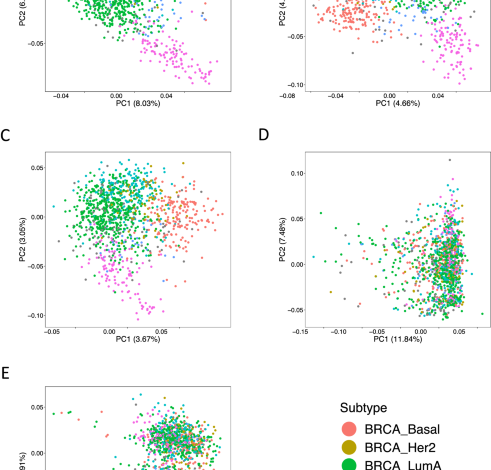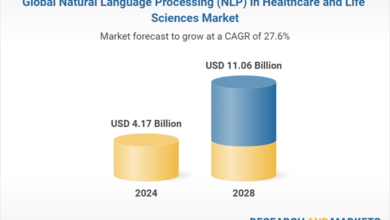Subtype-specific alternative splicing events in breast cancer identified by large-scale data analysis

Stratton, M. R., Campbell, P. J. & Futreal, P. A. The cancer genome. Nature 458(7239), 719–724 (2009).
Esfahani, M. S. et al. Functional significance of U2AF1 S34F mutations in lung adenocarcinomas. Nat. Commun. https://doi.org/10.1038/s41467-019-13392-y (2019).
Smith, M. A. et al. U2AF1 mutations induce oncogenic IRAK4 isoforms and activate innate immune pathways in myeloid malignancies. Nat. Cell Biol. 21(5), 640–650 (2019).
Zhao, Y., Cai, W., Hua, Y., Yang, X. & Zhou, J. The biological and clinical consequences of RNA splicing factor U2AF1 mutation in myeloid malignancies. Cancers (Basel) 14(18), 4406 (2022).
Furney, S. J. et al. SF3B1 mutations are associated with alternative splicing in uveal melanoma. Cancer Discov. 3(10), 1122–1129 (2013).
Rossi, D. et al. Mutations of the SF3B1 splicing factor in chronic lymphocytic leukemia: Association with progression and fludarabine-refractoriness. Blood 118(26), 6904–6908 (2011).
Kahles, A. et al. Comprehensive analysis of alternative splicing across tumors from 8705 patients. Cancer Cell 34(2), 211-224.e6 (2018).
Bigot, J. et al. Splicing patterns in SF3B1-mutated uveal melanoma generate shared immunogenic tumor-specific neoepitopes. Cancer Discov. 12(3), 872 (2022).
Bjørklund, S. S. et al. Widespread alternative exon usage in clinically distinct subtypes of Invasive Ductal Carcinoma. Sci. Rep. https://doi.org/10.1038/s41598-017-05537-0 (2017).
Wang, Z., Wu, Q., Liu, Y., Li, Q. & Li, J. Self-harm prevalence and associated factors among street children in Mashhad, North East of Iran. Arch. Public Health 79, 139 (2021).
Riley, R. S., June, C. H., Langer, R. & Mitchell, M. J. Delivery technologies for cancer immunotherapy. Nat. Rev. Drug Discov. 18(3), 175–196 (2019).
Han, N. & Liu, Z. Targeting alternative splicing in cancer immunotherapy. Front. Cell Dev. Biol. https://doi.org/10.3389/fcell.2023.1232146 (2023).
Ishida, Y., Agata, Y., Shibahara, K. & Honjo, T. Induced expression of PD-1, a novel member of the immunoglobulin gene superfamily, upon programmed cell death. EMBO J. 11(11), 3887 (1992).
Iwai, Y. et al. Involvement of PD-L1 on tumor cells in the escape from host immune system and tumor immunotherapy by PD-L1 blockade. Proc. Natl. Acad. Sci. U. S. A. 99(19), 12293 (2002).
Pearlman, A. H. et al. Targeting public neoantigens for cancer immunotherapy. Nat. Cancer 2(5), 487 (2021).
La, V. C. et al. Cancer mortality in Europe, 2000–2004, and an overview of trends since 1975. Cancer Mortal. Eur. 21, 1323–1360 (2010).
Prat, A. et al. Clinical implications of the intrinsic molecular subtypes of breast cancer. Breast 24(Suppl 2), S26-35 (2015).
Tomczak, K., Czerwińska, P. & Wiznerowicz, M. The Cancer Genome Atlas (TCGA): An immeasurable source of knowledge. Contemp. Oncol. (Pozn.) 19(1A), A68-77 (2015).
Wang, Z., Jensen, M. A. & Zenklusen, J. C. A practical guide to The Cancer Genome Atlas (TCGA). Methods Mol. Biol. 1418, 111–141 (2016).
Schafer, S. et al. Alternative splicing signatures in RNA-seq Data: Percent spliced in (PSI). Curr. Protoc. Hum. Genet. https://doi.org/10.1002/0471142905.hg1116s87 (2015).
Gao, J. et al. Integrative analysis of complex cancer genomics and clinical profiles using the cBioPortal. Sci. Signal 6(269), 1–1 (2013).
Morales, J. et al. A joint NCBI and EMBL-EBI transcript set for clinical genomics and research. Nature 604(7905), 310 (2022).
Park, J., Lee, J. O., Lee, M. & Chung, Y. J. AS-CMC: A pan-cancer database of alternative splicing for molecular classification of cancer. Sci. Rep. 12(1), 1–9 (2022).
Benjamini, Y. & Hochberg, Y. Controlling the false discovery rate: A practical and powerful approach to multiple testing. J. R. Stat. Soc. Ser. B 57, 289–300 (1995).
Mirdita, M. et al. ColabFold: Making protein folding accessible to all. Nat. Methods 19(6), 679–682 (2022).
Jumper, J. et al. Highly accurate protein structure prediction with AlphaFold. Nature 596(7873), 583–589 (2021).
Rigsby, R. E. & Parker, A. B. Using the PyMOL application to reinforce visual understanding of protein structure. Biochem. Mol. Biol. Educ. 44(5), 433–437 (2016).
Emsley, P., Lohkamp, B., Scott, W. G. & Cowtan, K. Biological crystallography features and development of coot. Acta Crystallogr. D Biol. Crystallogr. 66(Pt 4), 486–501 (2010).
Liu, J. et al. An integrated TCGA pan-cancer clinical data resource to drive high-quality survival outcome analytics. Cell 173(2), 400–416 (2018).
Anaya, J. OncoLnc: Linking TCGA survival data to mRNAs, miRNAs, and lncRNAs. PeerJ 2(2), e67 (2016).
Gubin, M. M., Artyomov, M. N., Mardis, E. R. & SchreiberTumor, R. D. Tumor neoantigens: Building a framework for personalized cancer immunotherapy. J. Clin. Invest. 125(9), 3413–3421 (2015).
Türeci, Ö. et al. Targeting the heterogeneity of cancer with individualized neoepitope vaccines. Clin. Cancer Res. 22(8), 1885–1896 (2016).
Foulkes, W. D., Smith, I. E. & Reis-Filho, J. S. Triple-negative breast cancer. N. Engl. J. Med. 363(20), 1938–1948 (2010).
Da Silva, L., Clarke, C. & Lakhani, S. R. Demystifying basal-like breast carcinomas. J. Clin. Pathol. 60(12), 1328 (2007).
Anders, C., Carey, L. A. & Carey, L. Understanding and treating triple-negative breast cancer. Oncology. 22(11), 1233–1243 (2008).
Picher, A. J. & Blanco, L. Human DNA polymerase lambda is a proficient extender of primer ends paired to 7,8-dihydro-8-oxoguanine. DNA Repair (Amst.) 6(12), 1749–1756 (2007).
Van Loon, B., Hübscher, U. & Maga, G. Living on the edge: DNA polymerase lambda between genome stability and mutagenesis. Chem. Res. Toxicol. 30(11), 1936–1941 (2017).
Bache, K. G. et al. The growth-regulatory protein HCRP1/hVps37A is a subunit of mammalian ESCRT-I and mediates receptor down-regulation. Mol. Biol Cell 15(9), 4337–4346 (2004).
Stuchell, M. D. et al. The human endosomal sorting complex required for transport (ESCRT-I) and its role in HIV-1 budding. J. Biol. Chem. 279(34), 36059–36071 (2004).
Zivony-Elboum, Y. et al. A founder mutation in Vps37A causes autosomal recessive complex hereditary spastic paraparesis. J. Med. Genet. 49(7), 462–472 (2012).
Hailstones, D. L. & Gunning, P. W. Characterization of Human Myosin Light Chains 1sa and 3nm: Implications for Isoform Evolution and Function. Mol. Cell Biol. 10(3), 1095–1104 (1990).
Lenzs, S., Lohseo, P., Seidel, U. & Arnoldll, H. H. The alkali light chains of human smooth and nonmuscle myosins are encoded by a single gene. Tissue-specific expression by alternative splicing pathways. J. Biol. Chem. 264(15), 9009–9015 (1989).
Taylor, D. A., Sack, J. S., Maune, J. F., Beckingham, K. & Quiocho, F. A. Structure of a recombinant calmodulin from Drosophila melanogaster refined at 2.2-A resolution. J. Biol. Chem. 266(32), 21375–21380 (1991).
Yap, K. L., Ames, J. B., Swindells, M. B. & Ikura, M. Diversity of conformational states and changes within the EF-hand protein superfamily. Proteins 37(3), 499–507 (1999).
Ikura, M. Calcium binding and conformational response in EF-hand proteins. Trends Biochem. Sci. 21(1), 14–17 (1996).
Sciarrillo, R. et al. The role of alternative splicing in cancer: From oncogenesis to drug resistance. Drug Resist. Updates 53, 100728 (2020).
Veuger, M. J. T., Heemskerk, M. H. M., Willy Honders, M., Willemze, R. & Barge, R. M. Y. Functional role of alternatively spliced deoxycytidine kinase in sensitivity to cytarabine of acute myeloid leukemic cells. Blood 99(4), 1373–1380 (2002).
Jahn, S. C. et al. GSTZ1 expression and chloride concentrations modulate sensitivity of cancer cells to dichloroacetate. Biochim. Biophys. Acta 1860(6), 1202 (2016).



